IIOJK becomes voiceless in Indian parliament
Retirement of four members leaves occupied region without any representation in the upper house

For the third time in history, the Indian Occupied Jammu and Kashmir (IIOJK) will go without any political representation in Rajya Sabha — the upper house of the Indian parliament.
Four members of the parliament from the occupied region, including leader of the opposition Ghulam Nabi Azad, are retiring by the end of this week, leaving their seats vacant.
On Aug 5, 2019, when Narendra Modi government revoked the autonomy and divided the state into two federally-controlled territories — a move widely condemned by Kashmiris and Pakistan alike —Lok Sabha’s seats were redistributed, with five going to Jammu and Kashmir and one to the Ladakh region.
Since 2018, when the elected state assembly was dissolved, no mechanism was left to elect representatives for the Rajya Sabha. Then, Governor Satya Pal Malik dissolved the assembly, amid speculation that the regional parties National Conference and the People’s Democratic Party (PDP) were planning a coalition to form the government.
Earlier, also the upper house was left without any representation from the occupied region from April 1994 to October 1996, as there was no elected assembly from 1991 to1996. The seats remained vacant also for three months from November 2008 to February 2009, when the state was under the governor’s rule.
Read More: Outcry as India books Kashmiri father seeking son’s body under anti-terror laws
In 1991-1996, the state lacked representation in Lok Sabha as well, because due to the volatile security situation parliamentary elections could not be conducted in 1991.
40 MPs represented IIOJK in Rajya Sabha
Since 1952, when the first batch of four members was elected by the state’s constituent assembly to occupy seats in Rajya Sabha, 40 people have represented IIOJK.
Azad, who was also the chief minister of the occupied region in 2005-2008, has been a member of the house five times -- four times from IIOJK, and once from the state of Maharashtra.
Tirath Ram Amla, a politician from the Jammu division, was a member of the house four times from 1967 to 1985, followed by Saifudin Soz, who has represented the region thrice.
Speaking to Anadolu Agency over the phone, outgoing MP Nazir Ahmed Laway said he was hoping for the restoration of statehood and an elected assembly in the occupied region soon. He said that six years ago he had become an MP when the state comprised Jammu and Kashmir and Ladakh.
Azad also said that in the absence of assembly and local representatives, he is receiving lots of delegations who come from IIOJK to Delhi seeking his intervention in one or the other.
“The state is without an assembly for the past two-and-a-half years. If there was any local elected representative, the people would go to him for grievances. They come all the way to Delhi spending their resources,” he said.
Currently, a delimitation commission headed by former Supreme Court judge Ranjana Desai is working to demarcate boundaries of the constituencies afresh to increase seats in the state assembly.
“We are expecting to complete the exercise in the next two months. After this exercise, the central government may decide to conduct assembly elections,” said a member of the commission, who requested anonymity.
Frequent central rule
The state has also remained under the direct central rule for over 10 years in the past 30 years. In 1990, when freedom movement broke in the region, Chief Minister Farooq Abdullah’s National Conference-led government resigned. It continued until October 1996, when the assembly elections were held under an unprecedented security cordon.
After the 2002 assembly elections, the governor’s rule was once again imposed for a period of 15 days due to a deadlock over the formation of a government. Again, in July 2008, the occupied state came under the governor’s rule after the PDP withdrew its support from Ghulam Nabi Azad’s Congress-led government. This period of the governor’s rule lasted for 178 days.
After the 2014 assembly polls threw up a fractured mandate, the state again remained under the central rule for 52 days before the BJP and PDP formed the government in March 2015.
The central rule was again imposed in January 2016 for 87 days after the then-Chief Minister Mufti Muhammad Sayeed passed away until his daughter Mehbooba Mufti was elected to lead the alliance.
This government collapsed on June 19, 2018, after the BJP withdrew its support. Until then, the state was under the central rule.
Upper house or Rajya Sabha
The upper house of the Indian parliament is a permanent house having a maximum of 245 members, of which 233 are elected by the state assemblies using single transferable votes through an open ballot. The Indian president can appoint 12 members for their contributions to art, literature, science, and social services.
The upper house has limited powers in passing money bills like the annual budget. If Rajya Sabha fails to return the money bill to Lok Sabha within 14 days, that bill is deemed to have been passed by both the parliaments.
But in terms of making laws for the states, this house has powers to pass a resolution by a two-thirds supermajority granting such power to the parliament.
Otherwise, under the Indian constitution, the central government cannot make a law on a matter reserved for states without any authorisation from Rajya Sabha. Prime Minister Narendra Modi-led government used this clause to divide IIOJK.
Elections to Rajya Sabha
The elected members of the state assemblies are allowed to vote in a Rajya Sabha election. The legislators send a batch of new members to the upper house every two years for a six-year term.
A third of members of this permanent house from each state retire once in two years and polls are held to fill up the vacancies. In addition, vacancies that arise due to resignation, death, or disqualification are filled up through by-polls after which those elected serve out the remainder of their predecessors’ term.
The election is held on the principle of proportional representation by a single transferable vote, which means a bloc of members belonging to one or more parties can elect an MP of their choice if they have the requisite numbers. This is to avoid the principle of majority, which would mean that only candidates put up by the ruling parties in the respective states will be elected.
A single transferable vote means that electors can vote for any number of candidates in order of their preference. Care has been taken that the ruling party with two-third of the majority does not take all seats.
As a measure to check rampant cross-voting, the assembly member shows his or her marked ballots to the party’s authorised agent before putting them into the ballot box.

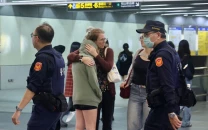
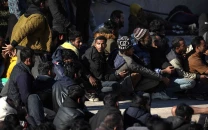
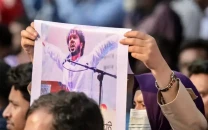

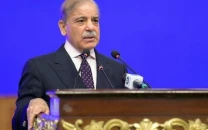
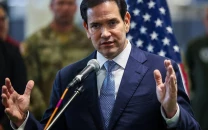












COMMENTS
Comments are moderated and generally will be posted if they are on-topic and not abusive.
For more information, please see our Comments FAQ